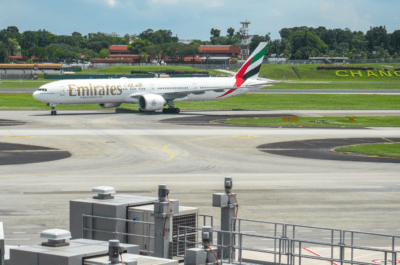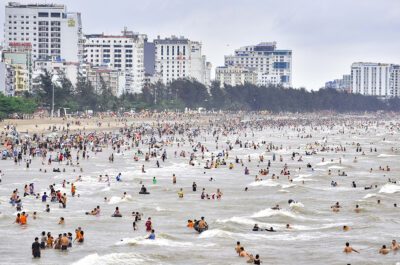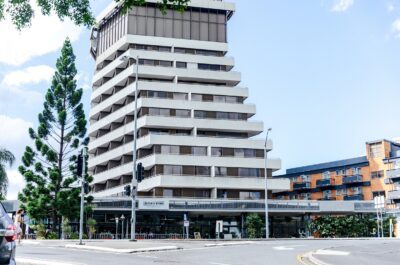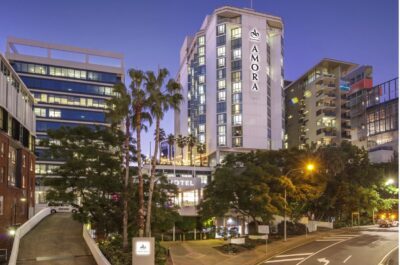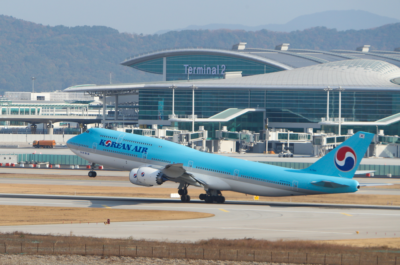Hotels located in resort destinations around the world reported better than expected results…
Hotels located in resort destinations around the world reported better than expected results during 2003 according to the HotelBenchmark Survey by Deloitte. An analysis of the operating performance of resorts throughout Europe, the Middle-East, South-East Asia, Oceania and the Caribbean reveals that this sector generally performed better than their city centre counterparts. Although a number of resorts suffered from declining demand levels, average room rates still managed some impressive growth, with resorts in the Caribbean, Middle East and Oceania reporting an increase in revenue per available room (revPAR). The pattern in South-East Asia was more varied with some destinations experiencing positive revPAR growth whilst other markets reported significant revPAR declines. Due to fluctuating exchange rates the performance of resort destinations in Europe is somewhat of an anomaly. In US dollar terms the markets performed strongly, whilst in Euro terms their performance was disappointing with revPAR declines in nearly all markets.
Common influences
The HotelBenchmark Survey compared the performance of 25 global resort destinations. These destinations were selected to provide a broad representation of resort performance across the world. For the consumer the propensity to travel to one destination over another is a personal choice dependent more on attributes and value for money than travel distance. Therefore, global events can have a very real impact on the consumers decision and therefore ultimately the performance of the resort destination. Throughout 2003 the common factors influencing performance were:
Geopolitical tensions – The war in Iraq and security concerns continued to influence travel patterns and consequently hotel performance. The World Tourism Organisation estimates that global international visitor arrivals fell one percent in 2003 as travellers opted to stay closer to home. Resorts within Europe, the Middle East and the Caribbean were beneficiaries of increased intra-regional travel. The continued expansion of low cost airlines also supported increased intra-regional travel, and with a number of low cost airlines being established across Asia Pacific the demand from weekend and short haul travellers looks set to continue.
Struggling economies – The struggling economies in the world`s major outbound markets – USA, Japan and Germany – further compounded the decline in resort visitors. Resorts on the Mediterranean and European Atlantic coast which are heavily reliant on the German outbound market came under pressure as occupancy levels fell.
Exchange rate fluctuations – The weakening US Dollar made European and Asian resorts even less attractive to North-American visitors. Many changed their travel patterns to be closer to home, therefore helping to improve the performance of resorts in the Caribbean. Conversely, the weak US dollar also encouraged increased travel to the Caribbean from Europe and the UK, particularly in the last quarter of the 2003.
Unprecedented summer sunshine – Resorts generally promote sunshine, blue skies and hot temperatures, but 2003 had a surprise in store for many Europeans – resort weather right on their own doorstep. The prolonged weeks of sunshine and extreme temperatures encouraged many Western and Northern Europeans to remain at home or closer to home during the summer months.
SARS – The spring outbreak of SARS had a crippling impact on the Asian cities of Hong Kong, Shanghai, Beijing, Singapore and Taipei but encouragingly this did not materially affect the performance of resorts located in South-East Asia and Oceania.
What`s hot and what`s not
Demand level – Despite the general fall in demand, the global resort market has proved relatively resilient with 16 out of 25 resorts throughout the world reporting only single digit declines in occupancy. Exceptions were the resort markets in the Caribbean, Surabaya, Phuket, Fiji and the Canary Islands where growth in occupancy was reported. The Caribbean resort markets of Cancun, Barbados and Puerto Rico were the best performers achieving growth in demand and reporting occupancy levels of up to 78 percent. This compares to 69 percent occupancy achieved by the best performing resorts in Europe, Oceania and the Middle East.
Average room rates – Over 84 percent of the resort destinations reported increases in average room rates during 2003. In US Dollar terms double-digit growth was achieved mainly due to the weakening of the American currency. In local currency the picture was somewhat different with only 32 percent of locations experiencing any growth. Resorts in the Middle East and the Caribbean reported the highest increases in average room rate. Resorts in Hurghada reported the most improvement in average room rate, up 58 percent, whilst destinations in South-East Asia showed declines. Bali was hardest hit with average room rates declining by 27 percent. Generally resorts in Oceania and Europe revealed single digit increases in average room rate with only the Cote d`Azur, Algarve, Antalya and French Polynesia experiencing slight declines.
RevPAR performance – Growth in average room rates fuelled the growth in revPAR with over 84 percent of the resort destinations reporting revPAR growth in US dollar terms. However, in local currency only 60 percent of locations experienced improvements. The resorts most affected by currency exchange rates were those in Europe where the strength of the Euro continued to hamper average room rate growth and therefore revPAR growth. The resort destination of Bali reported the heaviest declines in revPAR during 2003, as the market continued to suffer following the October 2002 bombings. Resort destinations along the Red Sea coastline experienced revPAR growth, as these destinations benefited from an increase in intra-regional travellers.
RevPAR performance of global resort markets in 2003

In summary, the global resort industry proved relatively resilient during 2003 generally outperforming its city centre counterparts. Declines in occupancy were kept to single digits and average room rates and revPAR reported improvements in most cases, despite the adverse influences during the year. The outlook appears encouraging as the last quarter of 2003 has revealed a number of positive indicators that prospects for 2004 should improve. This in turn should translate into further improved performance for the resort sector.
Notes: All analysis US Dollars or as otherwise stated.
The HotelBenchmark Survey contains the largest independent source of hotel performance data outside of North America and tracks the performance of over 6,000 hotels and 1.1 million rooms every month. Monthly surveys are produced on the following areas:
* Four regional rate and occupancy surveys covering Asia-Pacific, Europe, Latin America and the Middle East & Africa.
* Eight country/city rate and occupancy surveys for Australia, Belgium & The Netherlands, Germany, Italy, New Zealand, South Africa, UK and London.
* Profitability surveys on Germany and London.
* On an annual basis we produce profitability surveys tracking performance across all regions of the world.
Theodore is the Co-Founder and Managing Editor of TravelDailyNews Media Network; his responsibilities include business development and planning for TravelDailyNews long-term opportunities.




